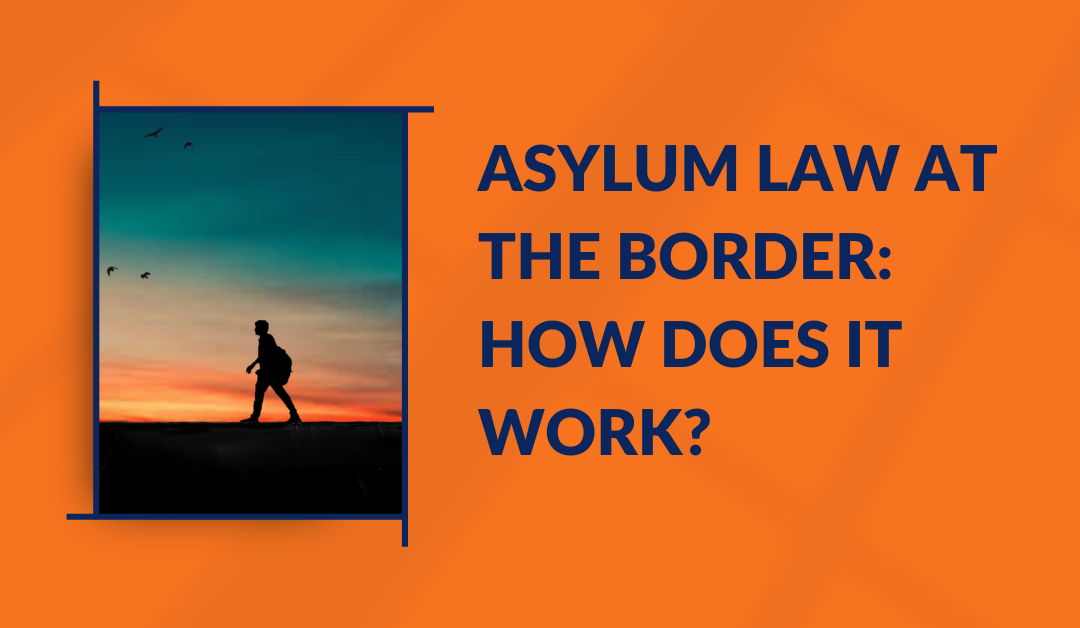Asylum Law at the Border: How does it work?
Non-citizens who enter the U.S. at either a designated Port of Entry (POE) or at another non-designated POE without legal authorization to enter the U.S. (for example a visa, green card, visa waiver eligibility, or U.S. passport), are immediately placed in a deportation process called expedited removal according to which the individual is forced to return home without a hearing.
Essentially, one is immediately liable to deportation unless one can defend against removal. Options for defense are extremely limited. For most people, the only course of action is to request asylum to border authorities because returning to their home country is dangerous, but like many parts of immigration law, proving that is more complex than one would think and it involves a series of steps, including “credible fear interview” or “reasonable fear screening”. These two are vitally important parts of the asylum process because, without a positive determination from them, the asylum seeker may be removed from the U.S.
What follows are some basic points about the main difference between credible fear and reasonable fear interviews and what happens in them, followed by preparation tips for these procedures.
What happens at the credible fear interview
Assuming a noncitizen expresses fear of returning to his or her home country before a Custom and Border Protection officer who has just detained him or her for not having the required immigration documents or for attempting to enter the U.S. without inspection, Custom and Border Protection officers will proceed to set up a credible fear interview with an asylum officer.
Typically, the person would have to wait days or even weeks in detention before the interview will take place. This waiting period could be reduced, but in no case may it be less than 48 hours.
At the interview, conducted by the asylum officer in person, via telephonic or satellite communication, the detainee will be under oath, answering some questions first regarding his or her background information, and following the person’s fear of return to the home country. Once the detainee gives a reason for fear, the asylum officer will ask follow-up questions about that and lastly give a brief summary statement.
These follow-up questions generally circle around the following main points:
- Fear of past or future persecution: There are certain standards for what constitutes a sufficient fear of past harm and likelihood of future harm. The interviewer will most likely want to know if the alleged risk of harm meets those standards, meaning if it is current, real, and ongoing.
- Government involvement (or lack thereof): The interviewer will want to know if the government was involved in the alleged harm or fear of harm the asylum seeker experienced.
- Connection to a specific social group: The interviewer will want to know if the detainee has some connection to the protected class, meaning membership to a race or ethnicity, religion, nationality, political opinion, or any other particular social group and that their persecution was based on a protected class.
What happens at a reasonable fear screening
The questions and the process of the reasonable fear interview are similar to those of the credible fear; however, the legal standard is higher. The asylum seeker must demonstrate that there’s more than a 50% chance that they will be subjected to persecution or harm. Assuming the asylum officer finds the individual’s claims to be valid and reasonable, they may be eligible for withholding of removal.
Tips for preparing for credible fear and reasonable fear interviews
- When a person is fleeing his home in the middle of the night, sometimes with little or nothing more than the clothes in his back, that person does not have much time to gather documentation or other physical proof to support an asylum application, so the quality of their own testimony in the credible fear or reasonable fear interview becomes crucial. It is important for the applicant to keep detailed notes about his or her story and to be exceptionally consistent in the screening and of course, throughout the entire process.
- The applicant should not hold back details of his or her situation with government agents, especially since interviewers and DHS attorneys may turn to discredit the story if the person begins to add important details that were not included in the credible fear interview.
Nobody should navigate the system alone
The importance of counting on an attorney that will serve as a guide throughout the asylum process cannot be overemphasized, as it has been proven that those who file an attorney have a higher success rate. A skilled and compassionate counsel could make the difference when it comes down to getting a positive result or not.
Nobody should navigate the system alone.

